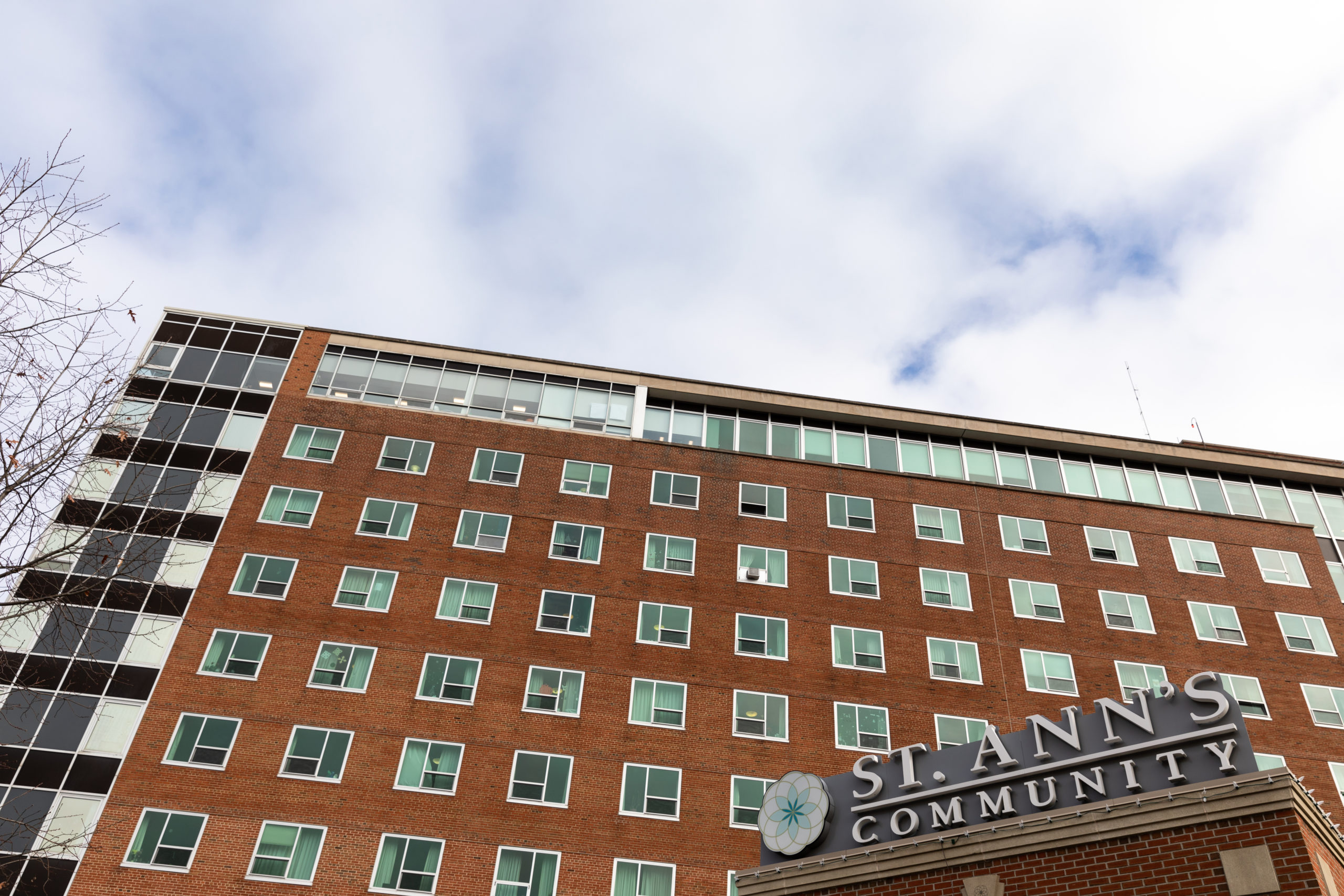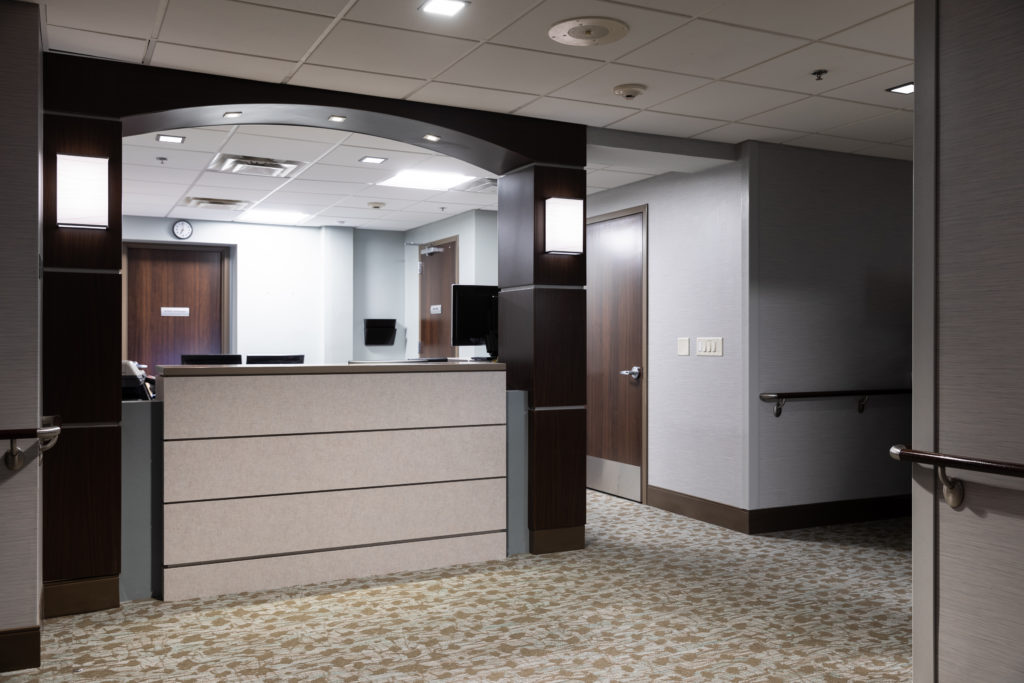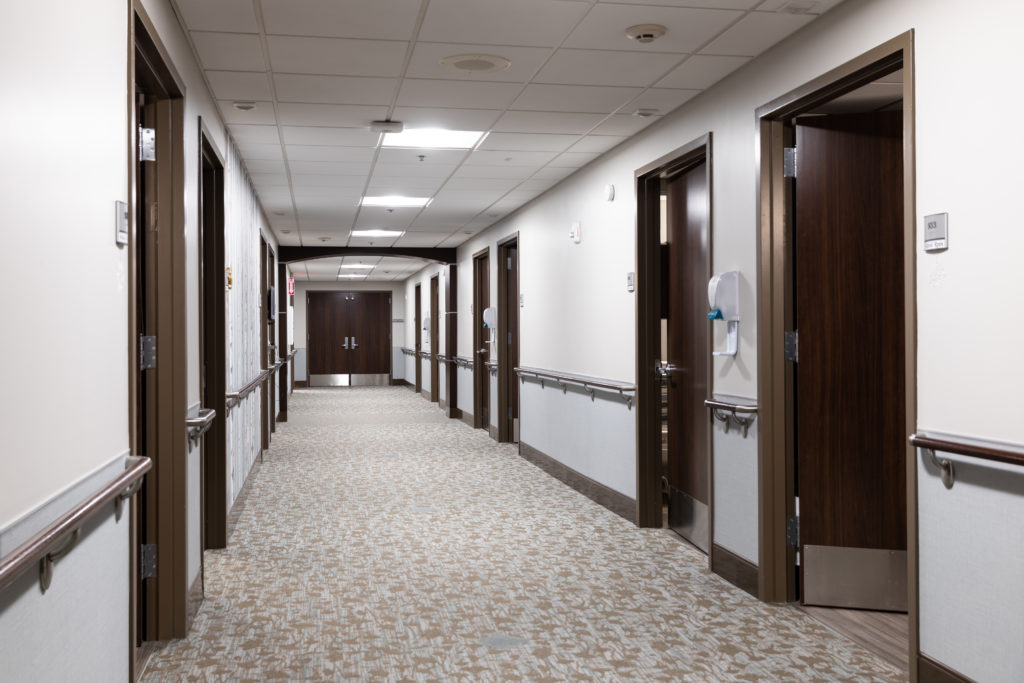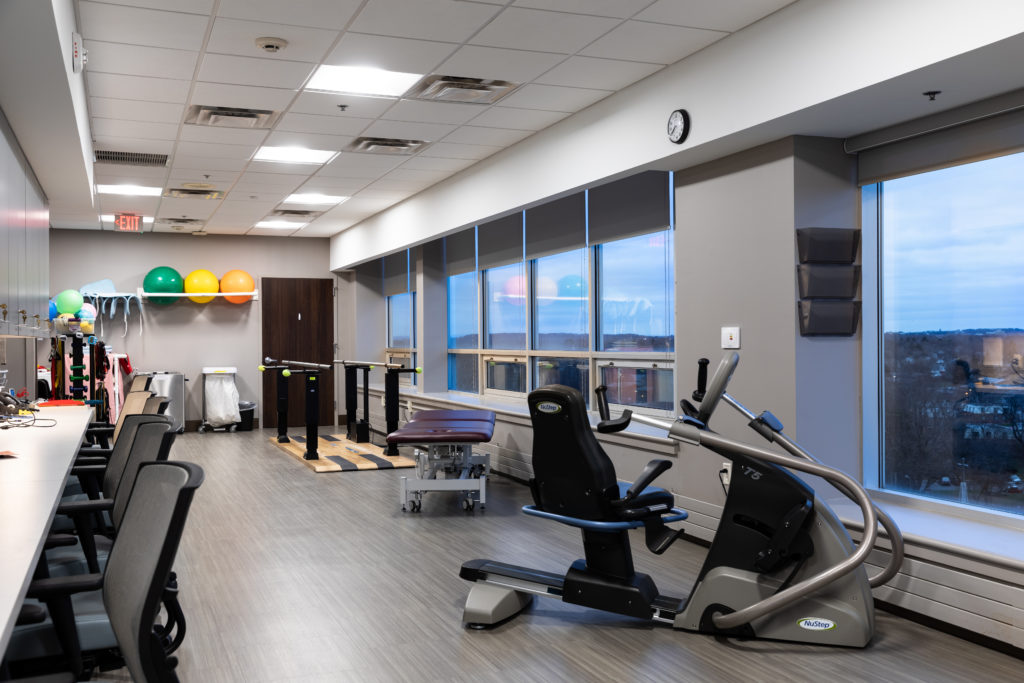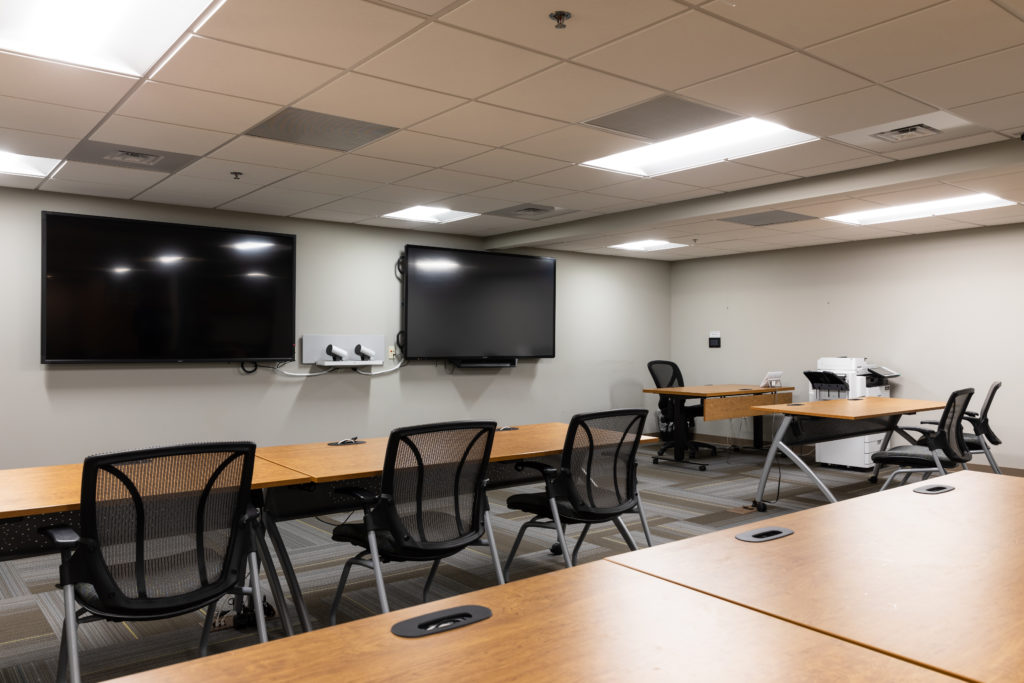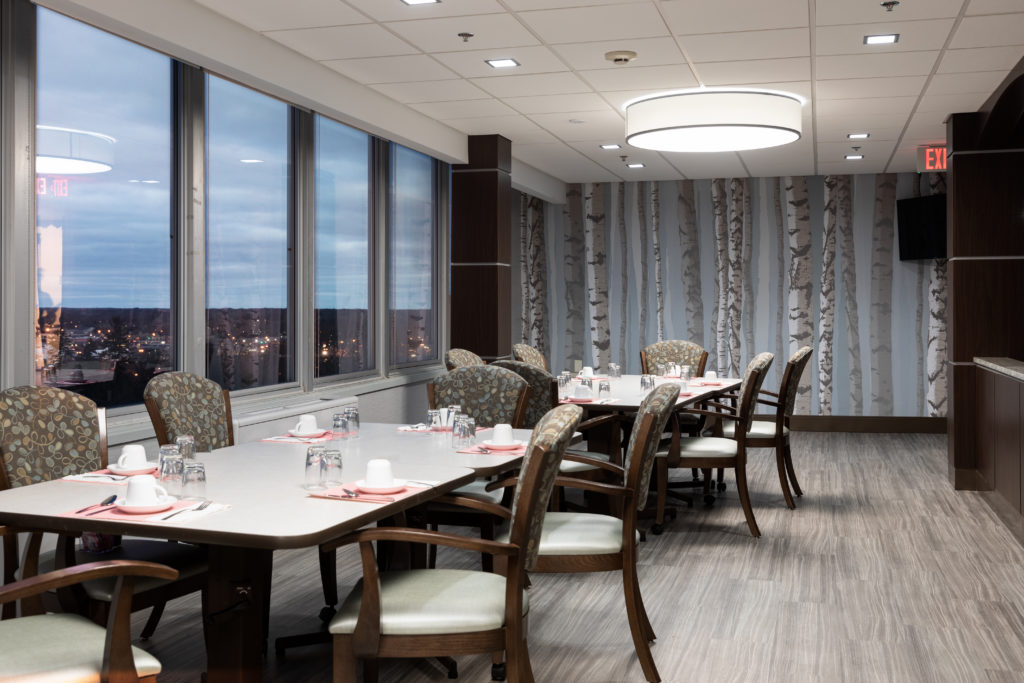
St. Ann’s is a 388-bed skilled nursing facility providing 24-hour care to seniors. It is an integral part of the larger St. Ann’s Community which offers multiple lifestyles and care options for seniors including independent living, rehab/transitional care, assisted living, memory care, nursing home care, wound care, and hospice at multiple locations in the Rochester, NY area.
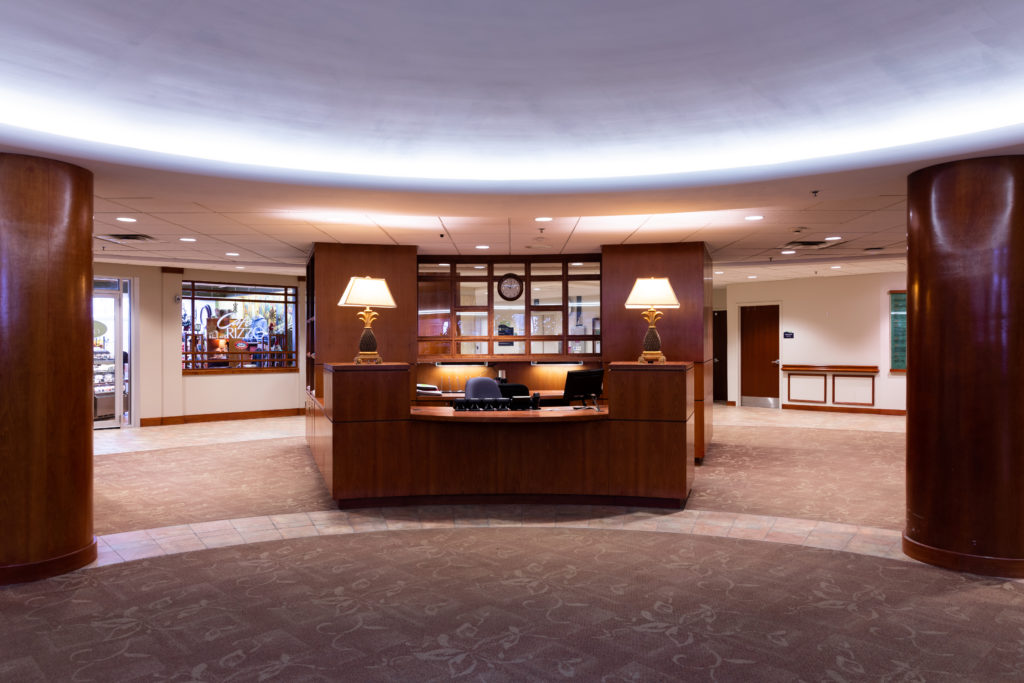
St. Ann’s Reception Area. Photo by Brett Carlsen
For over 145 years, St. Ann’s has provided quality care and services to older adults in the Catholic tradition. Their overarching mission is simple: Caring for the Most Important People On Earth.
St. Ann’s embarked on a major renovation project that touched virtually every area of the facility. Project goals included optimizing the comfort levels of patients and staff and reducing energy consumption. Every floor will reflect a household model that creates a community within each space that elders recognize as home. This requires adjusting the physical environment while staff continues to focus on person-directed living and elder/care partner relationships. A centrally-managed, flexible lighting system that leverages the latest technologies was identified as a renovation requirement.
The Encelium Light Management System was selected, giving St. Ann’s a centralized lighting control solution for all interior common spaces including nursing stations, dining rooms, day rooms, offices, and corridors. Creating household communities that support resident and staff comfort levels and task requirements, as well as saving energy throughout the building, required leveraging multiple control strategies simultaneously including occupancy sensing, time scheduling, personal control, and daylight harvesting. System flexibility also was critical and the Encelium System ranked high in this area.
- St. Ann’s Nurse Station. Photo by Brett Carlsen
- St. Ann’s Resident Hallway. Photo by Brett Carlsen
Nursing stations and the corridors leading to resident rooms on each floor leverage the Encelium System time scheduling control strategy with pre-set lighting scenes and occupancy sensors. If there is no movement in the hallways at 6:00 PM, the light level is scheduled to decrease from 70% to 30% to help residents rest.
When a nurse walks into the hall at night, an occupancy sensor triggers the system to increase the light level slowly to support care partner safety while minimizing the disruption to residents that are sleeping. At 7:00 AM, the hallway lights are scheduled to come on at a 70% level to help patients wake. Automated light levels pre-programmed on a time schedule provide a comfortable living and working atmosphere for residents and staff. Pre-programmed lighting levels, time scheduling, and occupancy sensors also are used throughout the non-residential medical floors and staff offices.
- St. Ann’s Physical Therapy center. Photo by Brett Carlsen.
- St. Ann’s Classroom. Photo by Brett Carlsen
Glass windows and walls are plentiful throughout St. Ann’s. Each patient floor has a dining area with a west-facing wall of glass windows, and other common areas also benefit from natural light through large windows. Using the Encelium System’s daylight harvesting capabilities, the lights in each of these areas automatically dim when sufficient ambient light is present from natural light.
St. Ann’s Dining area. Photo by Brett Carlsen
“The Encelium System is extremely flexible. It has reduced our energy consumption significantly while also enabling us to support the facility’s new household model strategy with the latest lighting technologies.”
– Chuck Skellen, Director of Facilities
The staff enjoys the personal control of the lighting in their individual workspaces particularly given LED light is much brighter than the fluorescent light they were accustomed to prior to the Encelium System installation. They can easily customize light levels on their laptops or PCs using pre-set lighting scenes, a slider tool, and a ‘save setting’ button. According to facilities staff, once users have access to the user interface (UI), training is simple.
By leveraging multiple control strategies, the Encelium System has reduced energy costs at St. Ann’s by at least $6,200 per month, a 62% savings as compared to pre-installation costs. In addition, the lighting system is a technology solution that creates an atmosphere that is beneficial to residents and the staff that cares for them. It is also preparing St. Ann’s for the future.
There are plans to connect the building’s HVAC system to the Encelium System to leverage its occupancy sensing capabilities and automate temperature levels in the common areas.

